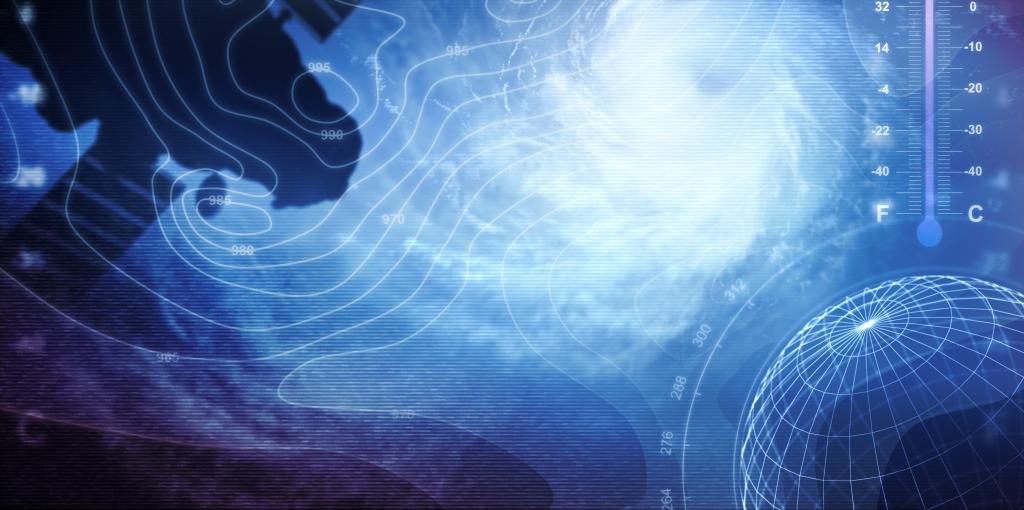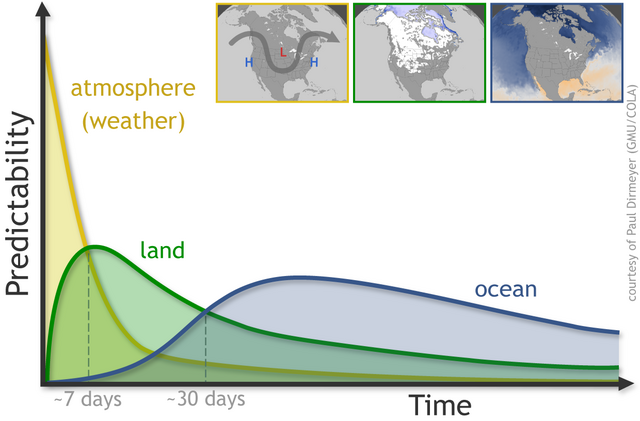Admission CTAs
NOAA taps Mason COLA scientists to analyze, update drought prediction models
The National Oceanic and Atmospheric Administration will soon update its weather prediction model and, for the first time, tap into the expertise of the academic community. Mason scientists from the Center for Ocean Land Atmosphere Studies (COLA), known for its computing and intellectual wherewithal with decades of experience running these types of models, will lead the effort to create a more reliable drought forecasting model.
On this $510,000 grant awarded over three years by the NOAA Climate Program Office’s Modeling, Analysis, Prediction, and Projection (MAPP), Paul Dirmeyer, professor in the Department of Atmospheric, Oceanic and Earth Sciences (AOES) will work alongside his colleague Professor Bohua Huang and Research Assistant Professor Chul-Su Shin to understand the ways ocean and land interact with the atmosphere and the role each plays in predicting droughts.
Weather models are known to reliably predict the weather one week out and provide seasonal outlooks. However, there is much less reliability in between those periods, called “subseasonal.” Dirmeyer and the team aim to improve this reliability by focusing on the interplay between atmosphere, land and ocean while diagnosing operational and research models to possibly attribute drought forecast skill to specific model behaviors.
“The atmosphere evolves quickly and so predictability is lost quickly, which is why weather forecasts beyond a week are usually not as useful,” said Dirmeyer. “This is why we want to look to ocean and land, and better incorporate their interactions into prediction models.”
The research will address drought research priority areas by 1) identifying surface-atmosphere interactions and their related processes that lead to drought; 2) identifying key parameters, applying methodologies and pathways to use coupling metrics that can contribute to the capacity of NIDIS to identify situations of elevated drought predictability and risk; and 3) associating processes and feedbacks between land, ocean and atmosphere that contribute to drought predictability, prediction and warnings. The newly developed NOAA Unified Forecast System (UFS) will also be evaluated and used for sensitivity studies to explore specific U.S. drought cases.
Dirmeyer suggests that meteorologists and oceanographers historically give the state of the land little attention.
“Moisture in the soil is particularly relevant at subseasonal time scales – greatly affecting whether there is predominantly evaporation (which increases humidity in the atmosphere) versus heating of the air (driving up temperature), or some combination,” Dirmeyer said.
He added that land states tend to create feedbacks with the atmosphere, particularly during summer, so for instance, dry soil can make heat waves and droughts more intense and last longer than they would have otherwise.
According to Huang, “Mason is among only a few universities to conduct seasonal reforecasts using operational models like UFS to support a study of this magnitude.”
To get a sense of just how much data is involved in the project, consider the output of the coupled ocean-land-atmosphere version of UFS that researchers will use; because it is more sophisticated and much higher resolution than the current National Weather Service operational forecast system, it would be generating 5 terabytes of output data each day.
Though early in the study, the team has already reforecast weather from 1958 to 2017 to test the current prediction model’s ability to forecast droughts.
Huang added, “We found that the current model has difficulty representing the oceanic influence over land,” further emphasizing a need for the new model to take both land and ocean atmospheres into account.
Instead of relying on data provided to them by others, Dirmeyer, Huang, and Shin will be hands on and comprehensive— running the UFS model themselves and testing the model until they’re confident in its validity.
Find out more about the full scope of the MAPP research project.
See the full list of awards from NOAA’s Climate Program Office.




